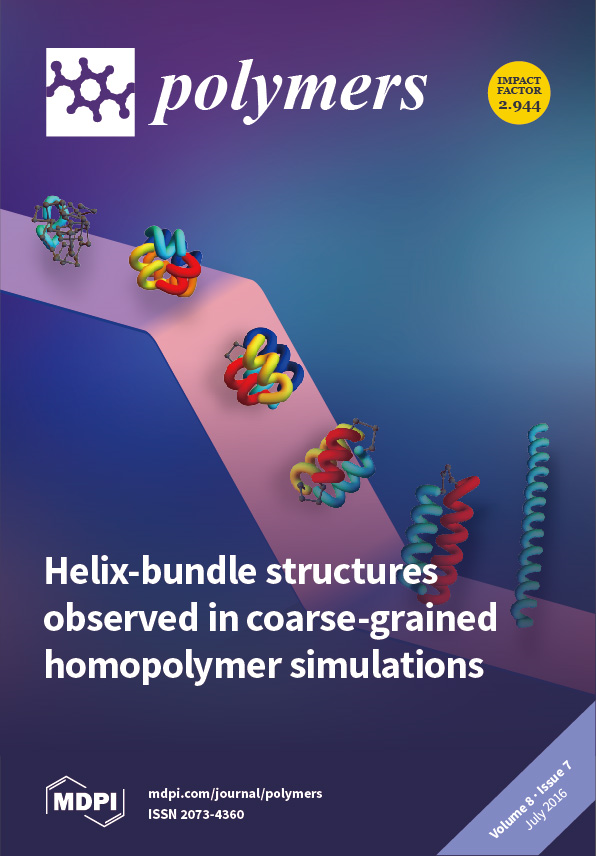We develop an analytical model to predict the collapse conformation for a single semiflexible polymer chain in solution, given its length, diameter, stiffness, and self-attractiveness. We construct conformational phase diagrams containing three collapsed states, namely torus, bundle, and globule over a range of
[...] Read more.
We develop an analytical model to predict the collapse conformation for a single semiflexible polymer chain in solution, given its length, diameter, stiffness, and self-attractiveness. We construct conformational phase diagrams containing three collapsed states, namely torus, bundle, and globule over a range of dimensionless ratios of the three energy parameters, namely solvent-water surface energy (
), energy of bundle end folds (
), and bending energy per unit length in a torus (
). Our phase diagram captures the general phase behavior of a single long chain (>10 Kuhn lengths) at moderately high (order unity) dimensionless temperature, which is the ratio of thermal energy to the attractive interaction between neighboring monomers. We find that the phase behavior approaches an asymptotic limit when the dimensionless chain length to diameter ratio (
L*) exceeds 300. We successfully validate our analytical results with Brownian Dynamics (BD) simulations, using a mapping of the simulation parameters to those used in the phase diagram. We evaluate the effect of three different bending potentials in the range of moderately high dimensionless temperature, a regime not been previously explored by simulations, and find qualitative agreement between the model and simulation results. We, thus, demonstrate that a rather simplified analytical model can be used to qualitatively predict the final collapsed state of a given polymer chain.
Full article






